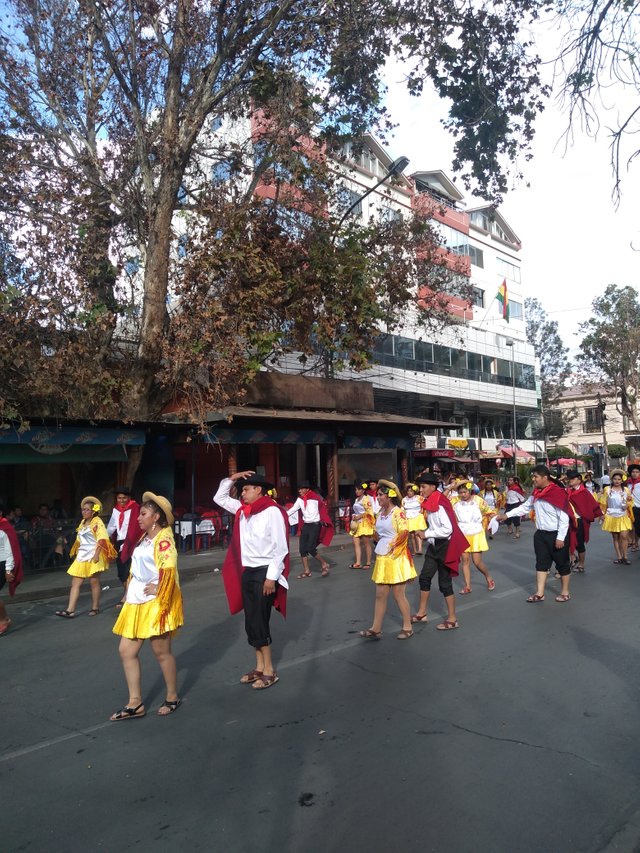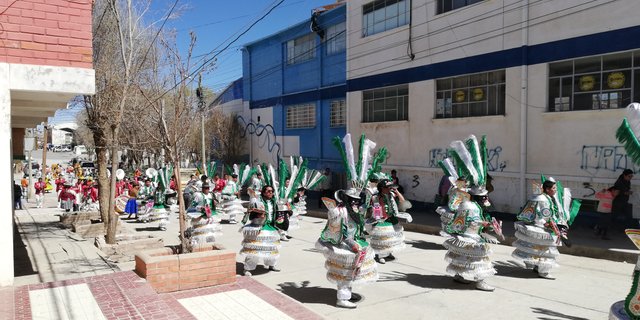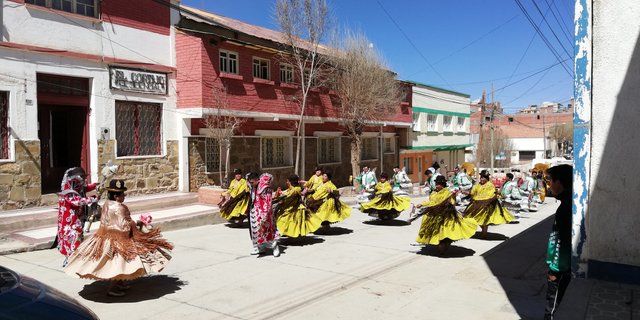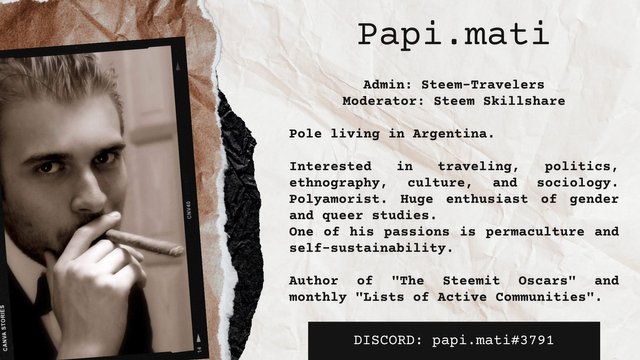Short list of the most interesting Bolivian music bands - Club75
Introduction
 Parade in Cochabamba - photo by @papi.mati
Parade in Cochabamba - photo by @papi.mati I've been on this platform for a long time and for some strange reason I have never written regularly on World of Xpilar. Probably because I was convinced that the group is dedicated only to photographers, and I'm a lousy photographer, more willing to use words than the camera. Over time, however, I began to meet the people who make up this community, both moderators and admins, as well as the users themselves:
- @xpilar and @adeljose who helped me with my old project of The Steemit Weekly newspaper
- @chiddri and @ the-gorilla with whom I was talking a lot in the comments
- many users that I follow and love to read, such as @ o1eh
I suppose I can feel good in the community because my observations show that the number of people who actually read and comment on posts is higher here than in most other groups. It's easier to interact, and the interaction builds bonds - one of the elements that I am looking for on social platforms such as Steemit.
To not extend my introduction I will go to the first post. Today I was recalling my trip to Bolivia, wanting to write an article about the local cemetery customs (I know, optimistic), and because I am a sentimental boy, the memories stayed with me until the end of the day. I turned on youtube and tried to revive the Andean atmosphere with the sounds that I remember from my two-month stay in that country. As Bolivia remains quite oriental for many, I figured why not collect all these songs and write a short story about them? As I thought, so did I.

I divided Bolivian music bands into two groups. The first is Andean, Quechua and Aymara music, which is the most widespread (Quechua and Aymara represent over 50% of all inhabitants of the country). It is quite characteristic, you may not like it, but even then I suggest you turn on the "mute" and watch the video clips because they will bring you closer to the places I have visited, you will be able to see traditional costumes and marvelous landscapes. The second group of bands is more ... Castilian. It is mestizo and white music, which is unlikely to be heard on the street or in noisy places. It is the music of expensive clubs and houses in the richer districts of larger cities.


Andean music, quechua, Aymara
Kjarkas
In the video, you can see the typical village and Andean costumes. I would say there are from the Potosi, which is the center of the country, but the band itself comes from Cochabamba. Believe me, I fell asleep with those sounds every weekend. Maybe not necessarily of my own free will, but because I lived in Cochabamba for over a month, and everyone played it at full blast. Maybe this is how the Bolivians declared their political preferences before the elections that were to be held soon because the singer was the president of the city in 2010.
The band founded two schools of traditional music - one in Peru and the other in Ecuador. Why not in Bolivia, you will ask? Because simply there is no need. In Bolivia, each school has its own orchestra, and music is a more important subject than mathematics.
Here is the second music video of the same band. A bit of machismo and sexism, which unfortunately remain a huge problem in Bolivia (I'll be happy to write about it later), and even more local kitsch. I publish because three things are interesting in the clip:
- the gentlemen's expression, which is not exaggerated at all and contrasts beautifully with the facial expressions that I know from Europe, especially from Poland,
- women's costumes that can be called typical for carnival,
- traditional rattles in singers' hands
Ozono
You can see traditional costumes in the clip. I also mentioned schools with orchestras. Now imagine all these schools and other informal groups in similar costumes doing parades to that song every weekend. No matter what the occasion.
Maria Juana (Marijuana)
The most popular song in Bolivia. If I had to choose the one and only song that would introduce the whole country, it would be Idilio, Maria Juana. Every day... every - single - day, on the way to shopping, on the bus, from venues, from open windows, from wardrobes, and from basements, you can hear Idilio everywhere! There are sounds that would be more Bolivian than these. Enjoy 🙂 Ah, pay attention to the costumes. I lived 15 meters from the art studio where they were made (yes, all these costumes are handmade). Expensive but beautiful.
Chila Jatun
Something between folk and Castilian music depends on the songs. I put them in the folk groups' description because it is a band strongly influenced by Kjarkas (musicians were found by Kjarkas, sponsored initially by them, and inspired by the tradition of Kjarkas).
The song is called "bella mujer", meaning "beautiful woman". The music may not be particularly great, but these costumes and dances ... considering that it is definitely above 3500 meters over sea level, in places where I find it difficult to go upstairs to the first floor, you can say that the Bolivians who dance there so vigorously are superhumans.

Music inspired by Castilian sounds
AnnaLu & Shavez
Not entirely Bolivian music, because AnnaLu is German, and Shavez is Peruvian, but the couple travels the world, practicing lifepacking, just like me (i.e. they stay in different places for a longer time, not only to visit them but also to live there for some time). They currently live in Bolivia.
Interestingly, the couple was also in Poland, which I come from, recording their own version of the Polish song "hey sokoły"
Willy Claure
A singer from the town where I spent the most time, i.e. the aforementioned Cochabamba. One of the very few Bolivian musicians, also known outside his country. He started out with a specialization in Bolivian cueca (Cueca, in short, is a traditional dance and music in the rhythm of 6/8 or 3/4, which reminds a rooster of courtship with a handkerchief in hand :P - mainly popular in Chile and western Argentina).
Efecto Mandarina
Beautiful, jazzy, exciting, and completely different from any other Bolivian bands I know.
That would be all from me. It's just a small inspiration for you to continue the research and find other amazing musicians and artists from Bolivia (or Latin America, in general). Hopefully, I could stimulate your curiosity a bit with that article.


Very interesting, I'd like to visit Bolivia to experience this one on one💐
Very interesting post. Thank you for sharing this information that helps to know more about this great country.